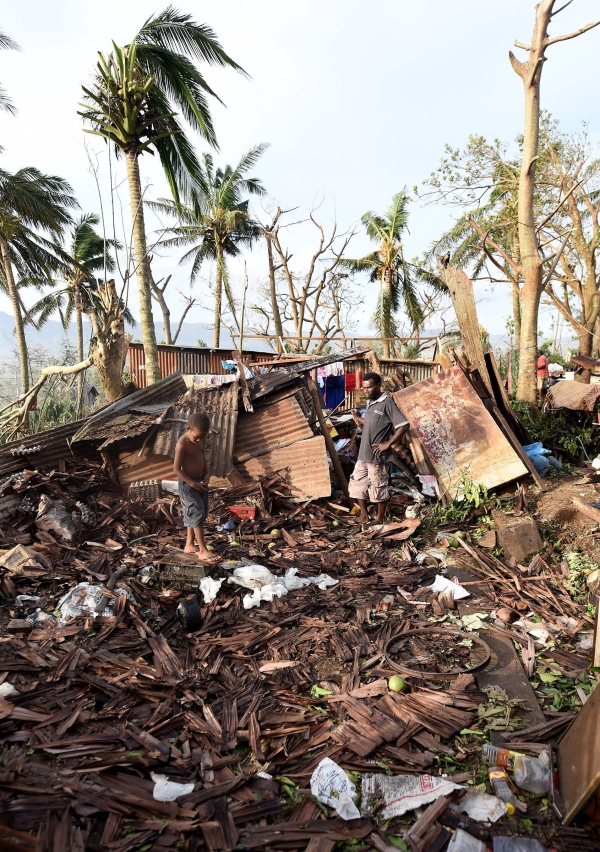When Cyclone Pam slammed into Vanuatu in May the vulnerability of Pacific’s island nations to extreme weather was again laid bare.
The loss of life and destruction of homes and key infrastructure captured our attention. The Pacific Division of the Ministry of Foreign Affairs and Trade (MFAT) coordinates an Emergency Task Force that responded immediately. New Zealanders mounted fundraising campaigns to help those trying to survive and clean-up. The first priority was ensuring the people of Vanuatu had access to water and sanitation. The infrastructure rebuild will come later.
When there’s a problem in the Pacific, it’s “our” problem. When there’s work to be done, we help.
But all is not well in our relationship with the Pacific. Head of the Secretariat of the Pacific Community (SPC) Colin Tukuitonga recently told local media that the region is turning elsewhere for the funds it needs. Tukuitonga said the region’s leaders “want to look elsewhere, we can’t just simply continue to rely on Wellington.”
This is a great challenge for New Zealand. We can’t compete with the deeper pockets of those nations the Pacific is now courting for cash. For example, New Zealand contributes 4.45% of the SPC‘s budget; 50% of it comes from the European Union. Even doubling our direct monetary aid across the Pacific would barely attract notice.
But the challenges the island nations face will not be solved by money alone. Our relationship is not based on cash. It is much deeper than that; it has as its foundation help, advice, guidance – transfer of knowledge and experience.
The Pacific looks to us because we have learned the art of collaboration. We work with others, across many teams, and with the people who are most affected. We are more multi-skilled and less specialised than many other nations – it comes naturally to us to train non-experts to be part of the solution.
MFAT’s focus for the Pacific is to build sustainable economic development. That means work that helps Pacific nations build their own economies and capabilities, decreasing their long-term reliance on international cash.
The NZAid programme directs hundreds of millions of dollars at the Pacific each year. Some of this pays for Pacific nations to use organisations such as NIWA to build the technology, skills and capabilities they need to start doing things themselves.
Fronting this approach is New Zealand’s first economic ambassador to the Pacific, Shane Jones. He is identifying ways New Zealand can help Pacific nations build their economic capability. His first priority, for example, is helping the region learn from New Zealand’s experience to safeguard and manage its $US2 billion ($NZ2.7 billion) fisheries resource. NIWA’s work assessing deepwater fish stocks in Tonga is the sort of expertise the Pacific is seeking.
NIWA's work in the Pacific
NIWA works in the Pacific on a wide range of science-based projects – climate change and variability, weather forecasting, natural hazards and tsunami modelling, hydrology and water quality, sanitation, fisheries and deepsea mineral development.
Our approach is to adapt our science to the needs of Pacific communities, to build long-term solutions, and to encourage the whole community to be part of the solution.
MFAT’s coordination of the New Zealand Government response to Pacific natural disasters has adopted this view. We’ve learned that replacing infrastructure destroyed by a storm is of limited use if it is in the same place, facing the same fate, as the original assets. Upgrading to the latest technology is of limited use if the locals don’t know how to, and can’t afford to, use and maintain it. Upgrades are of even less use if the locals don’t change unsustainable patterns of work and living.
The New Zealand lesson is to adjust to weather, not to fight it. Science can tell you what to expect from natural hazards in the future, and how to adapt to reduce the impact. That means that rather than putting up expensive walls against the sea, you move the things that are in danger. You move infrastructure that is most vulnerable to floods, winds and sea inundation.
Our climate work in the Pacific – such as upgrading weather forecasting and early warning systems – is not simply to help the island nations forecast storms and better understand their climate. It is aimed at creating the capability that helps ensure water security or enhance agriculture production, for example through climate-informed decision making.
We understand that science has a cultural context – it can only be as useful as the community wants it to be. That’s why NIWA’s science centres are based on an approach that many other nations are unfamiliar with – collaborating with Pacific nations and teaching and equipping them, so they can help themselves; build their own capability. We work in partnership with local and regional organisations to provide applied science-based assistance, training, capacity building and awareness activities. Many of our staff have lived in the Pacific or Asia regions and have an intimate knowledge of the biophysical and cultural environments.
As the latest issue of Water & Atmosphere demonstrates, we are doing a huge amount of work supporting the sustainable management of marine and freshwater resources and environments, increasing commercial and economic resilience to natural hazards, and adapting to or mitigating the impact of climate change in the Pacific.
We do this for good reasons. Pacific island nations are our neighbours and friends, and we have the scientific expertise to produce real, tangible, sustainable results.
Ultimately, what’s good for the Pacific is good for New Zealand and good for NIWA – because good science means good deeds, good relations and good environmental, social and economic outcomes.

